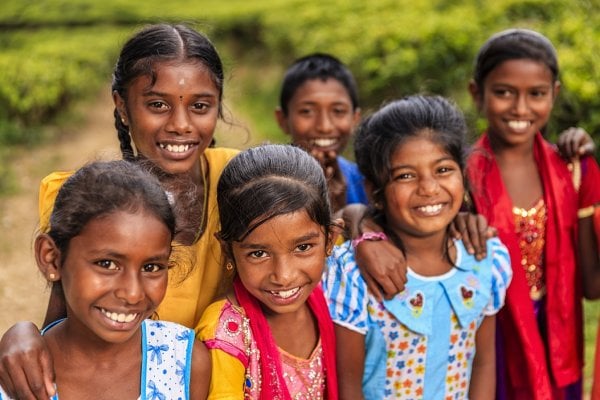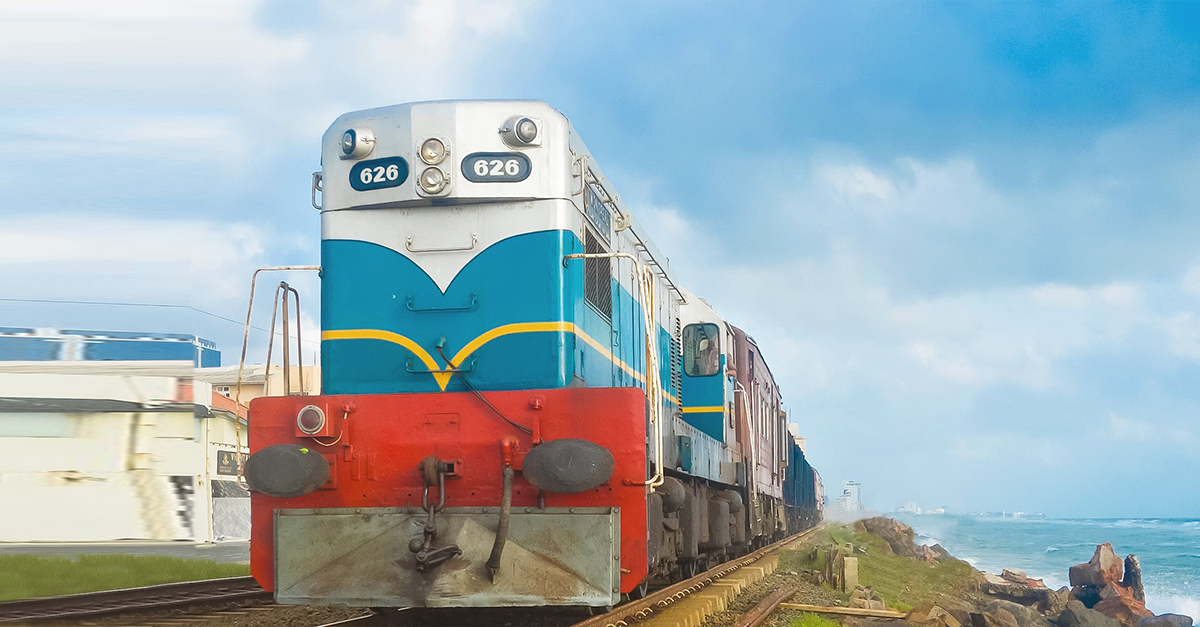
When the Yal Devi headed north, powered by Alberta, 31 years ago, never would the men behind the controls have known she was destined to take eight years to return to Colombo. If the history of world railways is anything to go by, this must be a record.
No sooner than Alberta reached Kankesanthurai, Liberation Tigers of Tamil Eelam (LTTE) rebel activity along the line made her return impossible. The Sri Lanka Army camp at Kokavil fell into rebel hands, making the northern line effectively inoperable.
There in Kankesanthurai, Alberta stayed, until 1997, when the ingenious Ratmalana Works disassembled her and brought her parts back to Colombo by ship. Alberta powered back to life two years later, and thundered up and down the line carrying loads only her type of engine could manage. And so she went on, until another fateful day in 2014, when at the Pothuhera railway station, she faced a head-on-collision with another train that arrived at high speed on the same track. Alberta was carried back to Ratmalana, a total wreck. But she rose once more to shine in brand new livery again, and continues to power down the railway lines, as she did before.
The date was December 26, 2004. The No. 50 Matara Express was on the way to Matara, pulled by Manitoba, with approximately 1,700 souls on board, entirely unaware of the tragedy that was then unfolding on the coastline of Sri Lanka. The main railway control room in Maradana had managed to stop every train running down the southern line, but not the Manitoba, who was making good time. The frantic officers had managed to ring up the Ambalangoda railway station while the Matara Express was still in the platform but sadly the entire staff was servicing the train at the time and no one had picked up the phone. That was the last opportunity to save Manitoba and those onboard who were running blind towards the tragedy transpiring, for she was not equipped with the luxury of a communication set. Only the Night Mail to Badulla had such a facility in 2004. At Peraliya, when the train was more than 200 metres away from the beach, the mighty waves reached her. Within minutes there occurred the world’s worst railway tragedy, the true death toll from which is still not clear. Manitoba, the giant locomotive of 78 tons was carried more than 100 metres and dumped by the giant tsunami which towered 40 feet, killing both her crew in the engine.

And yet, Manitoba rose again, from the twisted, tortured wreckage of the tsunami to stand and deliver once more, pulling the Udaya Devi from coast to coast, to date. Just like Alberta and Manitoba, No. 629 Kankasanthurei would encounter tragedy, facing the full force of a rebel land mine, but true to her class rose and still serves. No. 571 Saskatchevan was the only one to perish, destroyed in an LTTE attack when she was near Trincomalee, at the height of war in 1985.
And so the saga continues, of Sri Lanka’s most resilient force in the railway, the indomitable ‘Canadians’. Brought to the island for the first time way back in 1954, under the Colombo Plan, these General Motors-powered giants have been of long service to the island. Several batches of Canadian engines have made their way to the island since, making up the M2 Class of the Ceylon Government Railway, all engines named after the provinces and cities of Canada; Ontario, Alberta, Saskatchewan, British Columbia, Quebec, Manitoba, Nova Scotia, New Brunswick, Newfoundland, Montreal and Vancouver. [The last two of the M2 Class locomotives were shipped from the USA, in 1966, and named Galle and Kankasanthurei]. The later arrivals from Canada fell under the M4 Class of locomotives and were christened names of places of beauty in the island; Madhu, Sigiri, Ruwanveli, Namunukula, Kelani, Walawe, Dunhinda, Isurumuni, Diyaluma, Point Pedro, Samanala, Menik, Mahaweli and Laxapana—a unique honor which has not been bestowed on a class of railway engines before or since then.
Together, 28 Canadians made landfall in Sri Lanka, of which only one would fall in the line of duty, during their saga of over 65 years of railroading. They traveled the length and breadth of the island, powering up and down every major line. It was the Canadians who also powered the very first journeys of some of Sri Lanka’s most famous trains, the Udarata Menike, the Yal Devi, and the Ruhunu Kumari, during visionary B. D. Rampala era in the 50s. For decades now, the Candians have been the mainstay of Sri Lanka Railway, and while they are virtually museum pieces in their country of origin, it is not so here in the emerald island; for no other engine has done as much as the Canadians have, thundering up and down the lines in their unmistakable livery of dark blue, light blue, silver and yellow stripes, fascinating a generation of wide-eyed children—just as they did their parents when they were young, and possibly even their grandparents.
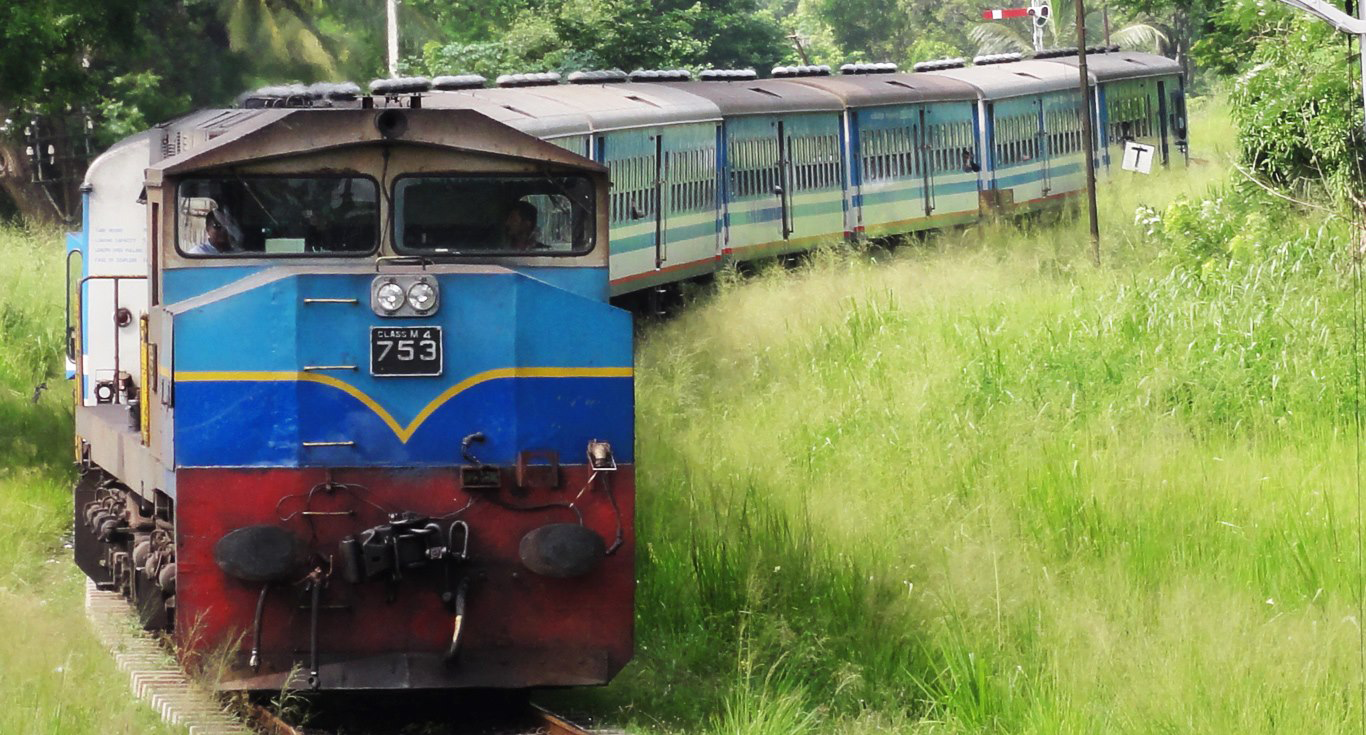
Before the ‘Canadians’
In 1952, Ceylon Government Railway (CGR)—as it was known then—under the legendary leadership of B. D. Rampala moved towards diesel power in its rolling stock, which by then was made up of British-built steam locomotives. The first set of diesels to be brought were Brush locomotives from the United Kingdom. However, their comparatively light horsepower compelled the CGR to look for a more capable workhorse for long-distance journeys. And so it was that under a grant from Canada, as part of the Colombo Plan, that the M2 class was born in Sri Lanka in 1954. Quickly put to long-haul operations, with Alberta first pulling the Ruhunu Kumari on 25 January 1955, this sleek class of engines have entered the annals of Sri Lanka Railways as the most reliable railway engines ever used.
With a capacity of 1460 hp, able to carry 79 tons and reaching speeds of up to 112 kmph, the M2 still packs a punch in the current rolling stock, even with most engines having passed the sixth decade of service. The M2 engine is actually modeled on the iconic GP7, that was made for the North American prairie runs in the 1940s. Incidentally, it is said that it was the GP7 that led to the end of the steam era, with over 2,500 of them being rolled into service. GP7 is a popular exhibit at many railway museums in the US, although it still runs today in many short line tracks. Due to its high reliability, the GP7 is believed by some to be the most successful diesel locomotive ever built. General Motors Electro-motive Division (EMD)—the company that built M2 shone in the history of railway with its record of manufacturing highly reliable engines for eight decades.
Suited To Need
According to Akila Karunarathna, a young railway enthusiast, the M2 came to service in the Ceylon as a number of subclasses with a degree of specifications to suit particular needs. “For example, both Montreal and Vancouver which arrived in1961, were fitted with changes [Bo-Bo axle configuration] to suit the main line which goes all the way to Badulla. These two engines remain the oldest in operation along the upcountry line, often a much sought after sight among railway fans,” he told me.
M2 remains a favourite among drivers still to date, because, as Subhash Dhanasekara, an avid railway blogger pointed out to me, “it is a very forgiving engine, with very much less wear and tear, thereby costing less in maintenance. There have been extremely few cases of engine failure-enroute with the M2 locomotives. And since virtually every apparatus in the driver’s compartment are non-electronic, the M2 is an engine that can be nursed back to the station at almost any emergency.” The availability of spares from abroad due to the high number of engines manufactured in the world has also made it an easy locomotive to work with.
According to Dhanasekera, the M2 fell out of favour with the railway in Sri Lanka, once the ‘W Class’ of engines, namely W1, from West Germany, and W2, from East Germany, were added to the service in late 60s. The W2, with its superior ability in the hills was an instant hit, with the additional benefit that it could also provide electricity to the entire train—something that M2 wasn’t fitted for back then. However, the W series was decommissioned by the early 80s due to maintenance issues, thereby clearing the way for the M2 to take prominence again. The M2, with its all-terrain capability, once more became the true workhorses of the railway lines, together with the M4 fleet. The resilience shown during the war years is an ample testimony to the reliance on M2 for the long-haul Northern run and the coast to coast eastern line, even today.
Bringing Out The M4s
The M4 was purchased by Sri Lanka in 1975, with the main purpose of serving the Main Line. With the trains becoming heavier with the addition of more coaches which made them longer than the earlier versions, there came a need to pull these trains up the hill inclines beyond Rambukkana. M4 with its massive horse power with CO-CO wheel configuration which gives better traction, was considered the answer. The powerful M4 pulled the 14 coaches-long night mail singlehandedly, up the tricky Kadugannawa Pass, which has a rise of 1 foot for every 44 feet, and is, according to Karunarathna, the only locomotive to do so on a regular basis. The usual procedure, even today, is to use another engine, called the banking locomotive [or “pusher”] from the Rambukkana Station upwards. However, the other issues would shorten the affair between the M4 and the Main Line, Dhanasekera said, as its width, weight and length caused problems on the curvy track above Nawalapitiya.
As a result, once the Hitachi and Henschel engines, known as M5 and M6 respectively, were introduced to the country in late 70s, it fell on these new engines to do the honours of Main Line railroading. [Ironically, while Henschel was not meant for the upcountry line, to the surprise of Srilanka Railway, this West German locomotive fit the role perfectly]. The M4, thus released from Main Line duties, began its power runs along the coastal line, and has done ever since. Although the 4stroke engine creates more challenges than the faultless M2, drivers and enthusiasts alike have taken to the M4 due to its rugged appearance, speed, raw power and that unmistakable ‘helicopter’ sound from the engine. With its spacious compartment [legend has it that some M4s actually came fitted with a refrigerator in the compartment!] and greater visibility up front, drivers of M4 found life easier on tricky Srilankan tracks. In fact, this wide-nosed “safety cab” design in engines such as M4 [MX620 in Canada], would later become the standard for all trains in North America due to improved crew accommodation and collision protection.
Both M2 and M4 would rank as the engines with among the best fuel economies, compared to other heavy engines brought to Sri Lanka in later years, with the M2 requiring as little as 2.5 litres per kilometre on a regular run. So invested in the engine, railway lore has it that a Sri Lankan engineer was sent to Montreal Locomotive Works, Canada to test the M4s before they were shipped to Sri Lanka. The engines arrived on schedule but at the cost of the engineer who was grabbed by Canadian Pacific to do their runs along the vast Canadian Prairies! When the then prime minister of Canada, Pierre Trudeau made a state visit to Sri Lanka, in 1971, he was treated to a journey to Kandy in Montreal, the engine bearing the name of his home state. The M2s have also had the honor of driving many famed menikes, kumaris and devis on their maiden journeys.
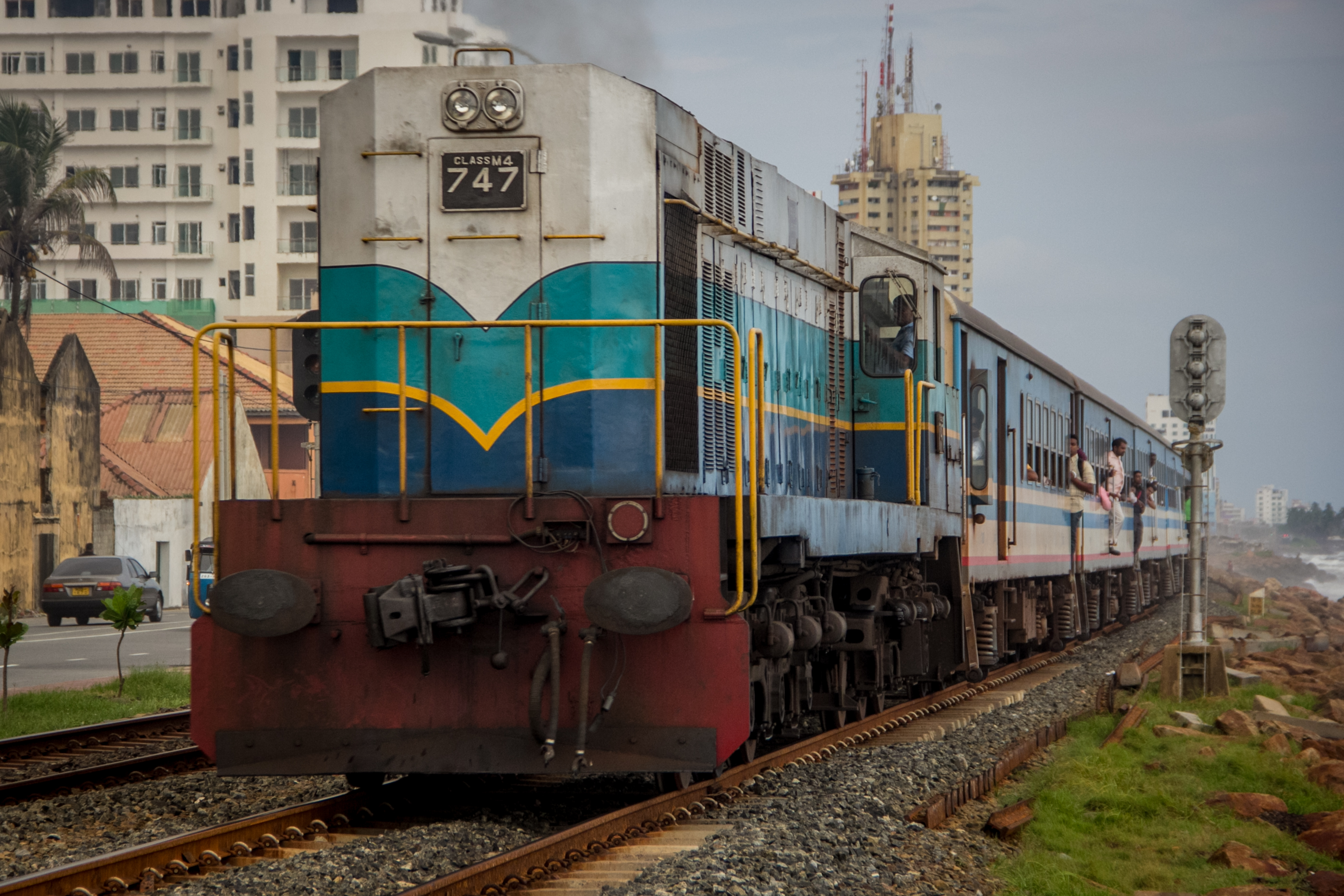
Unlike the more popular M2, the larger and more powerful M4 was manufactured only in a limited number and still operates in few countries such as Bangladesh and Tunisia. M2 was in fact a product of US technology, though produced by General Motors in Canada, while M4 was mostly Canadian engineering, manufactured by Bombardier Montreal Locomotive Works. When British Columbia pulled Udarata Menike to Badulla in 1956, on her very first journey, it’s said the power of the engine would have been enough to produce electricity for the entire Badulla town!
Both the Canadian classes are painted in identical livery, and Manitoba still shows the waves of the tsunami incorporated into its design. No machine built by man is of use unless it is cared for constantly and this is true of these gentle giants who have borne the brunt of the nation’s rolling stock for generations. Under the tender attention of the dedicated railway engineer teams at Ratmalana and Dematagoda, it is clear that the ‘Canadians’ have not seen the last of Lanka and are destined to hold the line for the foreseeable future.

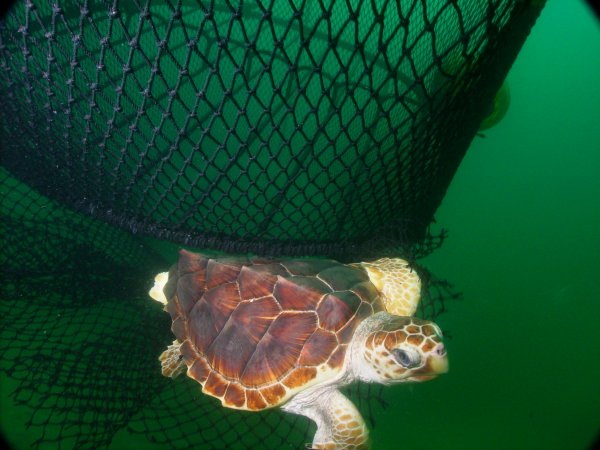

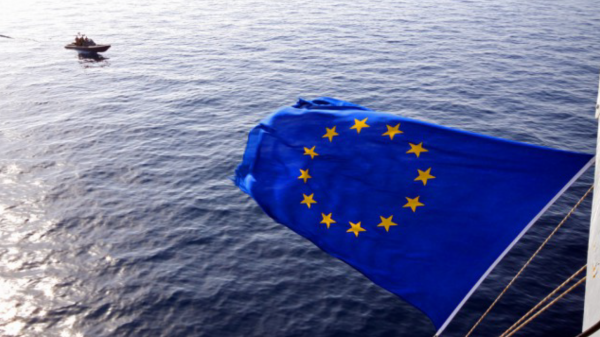


.jpg?w=600)
